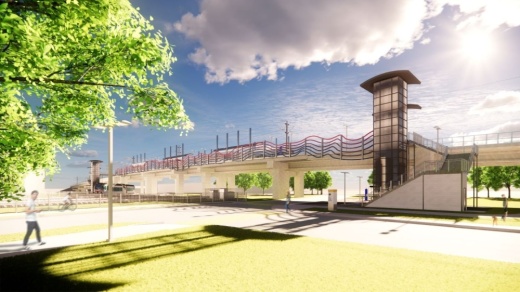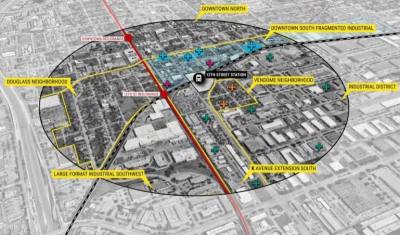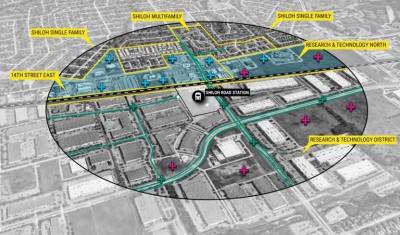City documents indicated that the purpose of the study was to identify areas around the two new DART stations being built in Plano that could be suited for transit-oriented developments. According to the study, these types of developments are typically built near public transit areas and are more attractive to developers and prospective residents.
The study was presented at the March 28 Plano City Council meeting and was conducted by AECOM, an independent engineering firm.
“There is a really interesting opportunity to get to a more diverse set of housing options [in these areas],” said Chris Brewer, economic development lead for AECOM. “The land is not cheap, but that gives us opportunities to think about how we can get to ... a broader mix of products where people can also take the train to other places.”
The Silver Line project is a $1.89 billion commuter rail line being built by DART that will connect Plano travelers to the Dallas Fort Worth International Airport. Riders will have an estimated travel time of 60 minutes or less from Plano, according to figures released by the transit agency. The project was originally planned to be complete this year, but DART announced last summer that it would be delayed until late 2024.
The line will add 10 new stations across DART’s service area, with two of those to be in Plano. The Shiloh Road Station will be located at 1101 Shiloh Road, and the 12th Street Station will be located at 1180 12th St.
The study identified a 1-mile diameter circle around the two future stations, with a goal of identifying likely potential redevelopment sites. According to the study, those sites were determined by asking whether a plot of land is vacant or occupied, and how much of that vacant land is available. The study also asked about the age of the structure occupying a plot of land and how much of the available land could be redeveloped.
After determining these answers, the study found that 95% of all the likely potential redevelopment sites found were in close proximity to the 12th Street Station. The study stated that undeveloped land costs around the 12th Street Station location had risen from $7 per square foot in 2010 to $28 per square foot by 2022.
The study determined the best options for development in the area were building townhomes, attached homes and duplexes, or converting existing industrial buildings into restaurants, boutique retail or event spaces.
“To make the housing obtainable, it may be that we take a look at different opportunities with smaller homes and smaller lots [around the stations],” Council Member Rick Grady said.
The study split up the areas around the 12th Street Station into different sub-districts that included Downtown Plano north of the station site, the Douglass Neighborhood just west of the site, an industrial district located southwest of the site, a district off K Avenue south of the site, the Vendome Neighborhood just east of the station and an industrial district southeast of the site.
In the downtown area, the study determined townhomes and apartment complexes of four to five stories were the most likely uses for potential redevelopment sites. A set of vacant lots and aging single-family homes in the Douglass Neighborhood district were determined to have likely redevelopment potential, according to the study. The study stated “preservation of affordable single-family housing should be a priority in this area.”
Parts of the industrial district, the study stated, could be redeveloped for apartments, restaurants, retail or showrooms. In the K Avenue district determined by the study, Ferro, a high-end apartment development is being built and is expected to open this summer at 1005 11th St. The study stated retail stores, restaurants or showrooms would be other appropriate developments in this area.
The Vendome Neighborhood district would be suited for townhomes or a mix of multifamily units and commercial buildings, according to the study. Redevelopment opportunities in the industrial district would be best served with retail, restaurants and event rooms, according to the study.
Most of the same types of redevelopment were recommended for areas around the Shiloh Road Station but on a much more limited scale, taking into consideration that area is more suited to industrial properties, according to the study.
With the information gathered from the study, council indicated that official plans to guide development around the new stations could be prepared for future use. The entire study can be viewed here.







